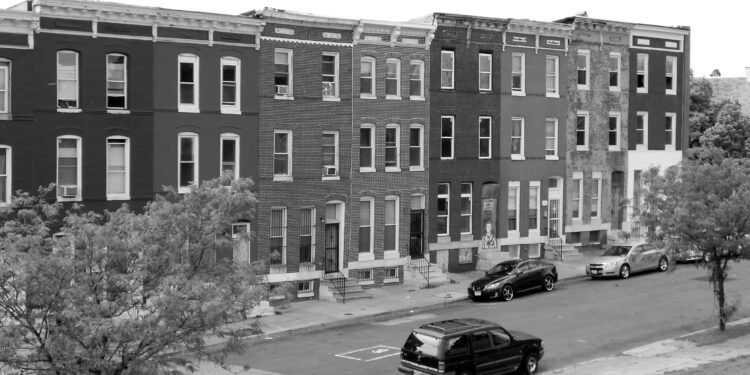These reforms represent more than technical code tweaks—they reflect a shift in urban policy from constraint to capacity. For other U.S. cities wrestling with housing shortfalls, Baltimore’s approach offers a useful model of regulatory reform in action.
The core of Baltimore’s reforms is regulatory simplification. By removing a mandated minimum of off‑street parking, the city lowers one of the costliest development prerequisites. National research shows parking minimums inflate housing costs by linking units to expensive garages and unused parking stalls. For example, a recent federal overview found that eliminating parking minimums can reduce construction costs and support more affordable housing.
Allowing buildings closer to the property line and relaxing stairwell mandates similarly reduce development friction—both in terms of design and cost.
The second opportunity lies in densification without full up‑zoning. Rather than leap immediately to skyscrapers, Baltimore’s bills permit modest increases in unit production—especially within existing footprints or four‑ to six‑story buildings that previously required more stringent standards. These incremental changes can attract investment more swiftly than grand master plans, and serve as “low hanging fruit” for growth.
Third, the reforms are explicitly aimed at population retention and growth. As the city loses residents, expanding housing availability becomes part of the competitiveness equation for jobs, tax base, and livability. By signalling that it is “open for building,” Baltimore may gain first‑mover advantage among U.S. older industrial cities.
That said, the reforms are not without legitimate concerns. Critics in Baltimore worry the changes lack guardrails against displacement of longstanding Black residents and the pressures of gentrification. Councilman James Torrence warned on the record: “When Black people leave this city, I want to make sure on this council record that I told you so.”
One specific locus of concern: removing parking minimums in neighborhoods with heavy car‑dependence, weak transit access and limited resident parking may heighten parking stress for legacy homeowners.
Any city considering similar reform must build in metrics for displacement risk, ensure neighborhood‑specific analysis, and support affordable housing concurrently.
For municipal policymakers in other cities, several actionable lessons emerge:
-
Identify which existing regulations are cost drivers (e.g., parking minimums, large lot setbacks, redundant stair‑cases) and quantify their impact on housing supply and cost.
-
Pair modest regulatory reform (four‑ to six‑story building flexibility, proximity to lot lines) with clear signals to the private market—so developers know this is not a one‑off experiment but a policy shift.
-
Incorporate affordability and anti‑displacement monitoring from the start. Regulation change alone won’t protect legacy residents without safeguards (inclusionary zoning, rent stabilization where applicable, community land trusts).
-
Use regulatory reform as part of a broader growth strategy, not the only lever. For example, Baltimore’s reform builds on its previous “Vacants to Value” efforts to turn abandoned property into housing.
-
Maintain resident engagement in neighborhoods with particular vulnerabilities (car‑dependence, weak transit) to tailor reforms (e.g., phased implementation, parking mitigation measures) rather than “one size fits all.”
In sum, Baltimore’s housing code reform signals a shift away from purely supply‑constraining regulation toward a more growth‑oriented posture. It demonstrates that older post‑industrial cities can alter their regulatory architecture to invite housing investment—and in doing so, potentially reverse population loss. Other cities should watch closely, adapt to local context, and pair reform with strong commitments to equity.









